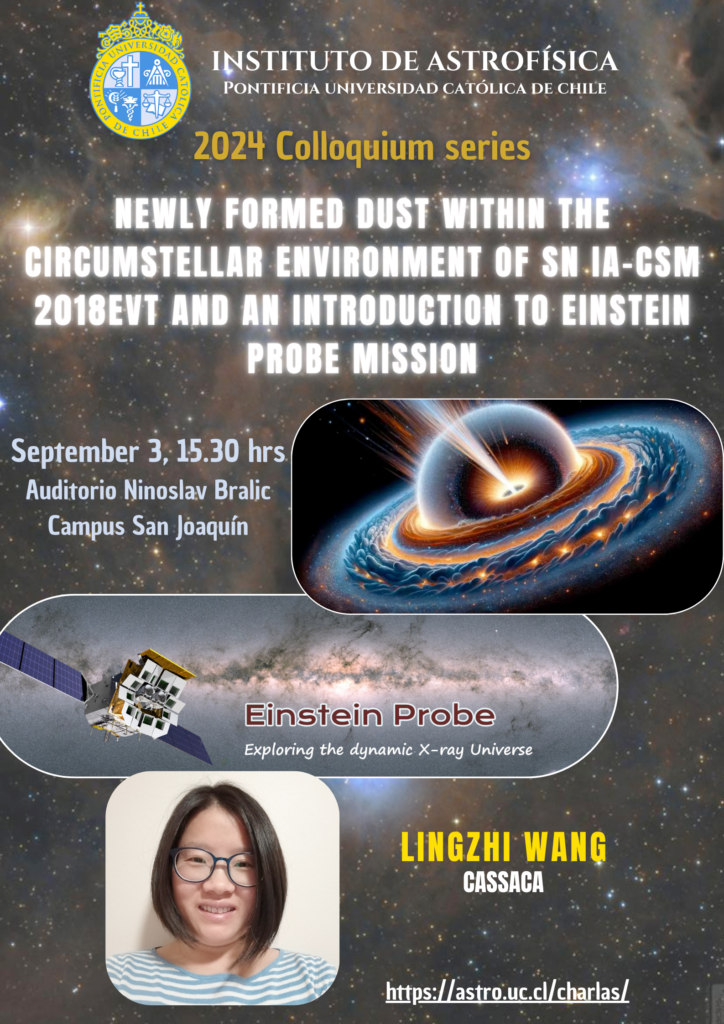Newly Formed Dust within the Circumstellar Environment of SN Ia-CSM 2018evt and an Introduction to Einstein Probe Mission – Lingzhi Wang
Dust associated with various stellar sources in galaxies at all cosmic epochs remains a controversial topic, particularly whether supernovae play an important role in dust production. We report evidence of dust formation in the cold, dense shell behind the ejecta–circumstellar medium (CSM) interaction in the Type Ia-CSM supernova (SN) 2018evt three years after the explosion, characterized by a rise in mid-infrared emission accompanied by an accelerated decline in the optical radiation of the SN. Such a dust-formation picture is also corroborated by the concurrent evolution of the profiles of the Hα emission line. Our model suggests enhanced CSM dust concentration at increasing distances from the SN as compared to what can be expected from the density profile of the mass loss from a steady stellar wind. By the time of the last mid-infrared observations at day +1,041, a total amount of about 0.01 M⊙ of new dust has been formed by SN 2018evt, making SN 2018evt one of the most prolific dust factories among supernovae with evidence of dust formation. The unprecedented witness of the intense production procedure of dust may shed light on the perceptions of dust formation in cosmic history. The paper is available at: https://www.nature.com/articles/s41550-024-02197-9
Additionally, I will introduce the Einstein Probe mission, which is the first wide-field X-ray telescope capable of a sensitive and untargeted high-cadence time-domain survey of the X-ray sky. EP was launched successfully in January 2024 and started its regular survey in August 2024. Chile’s exceptional astronomical resources provide unparalleled follow-up observation opportunities for the Einstein Probe. GCN alerts for the Einstein Probe: https://gcn.nasa.gov/missions/einstein-probe

Horarios: September 3, 2024 15:30
Publicado por: Claudia Aguilera